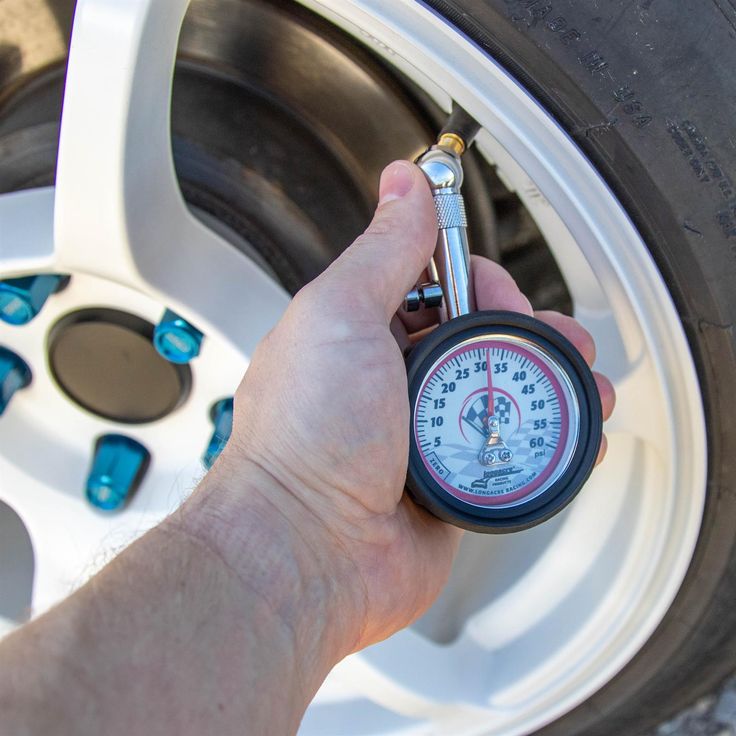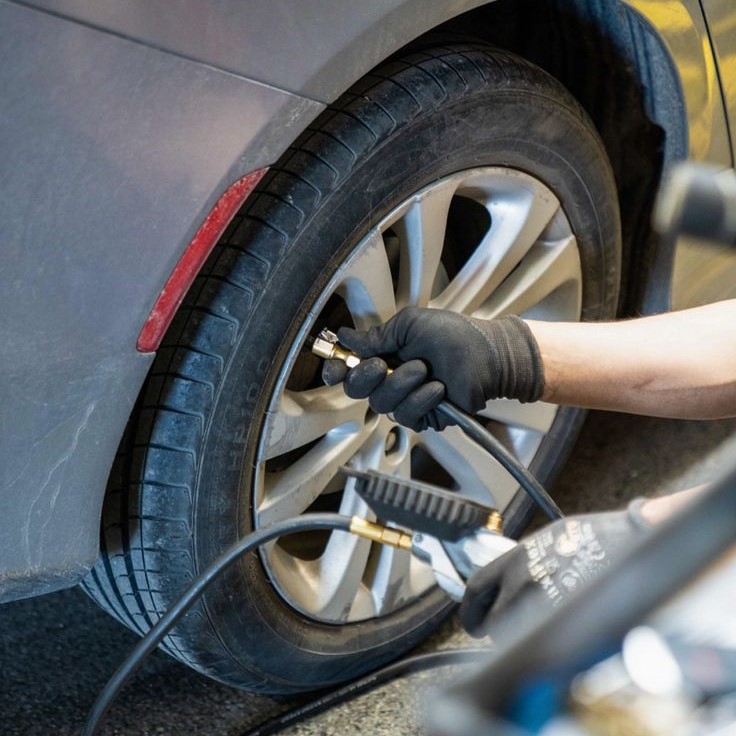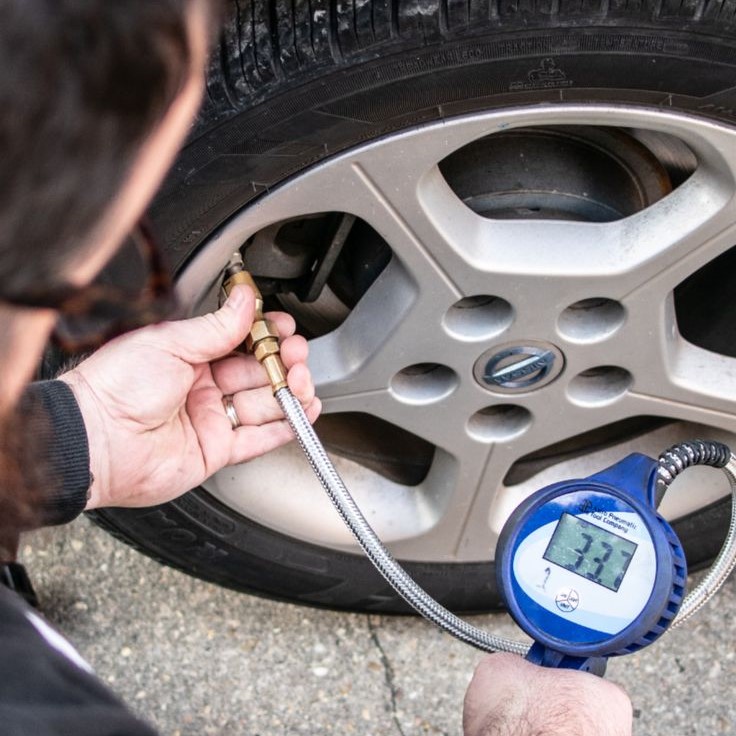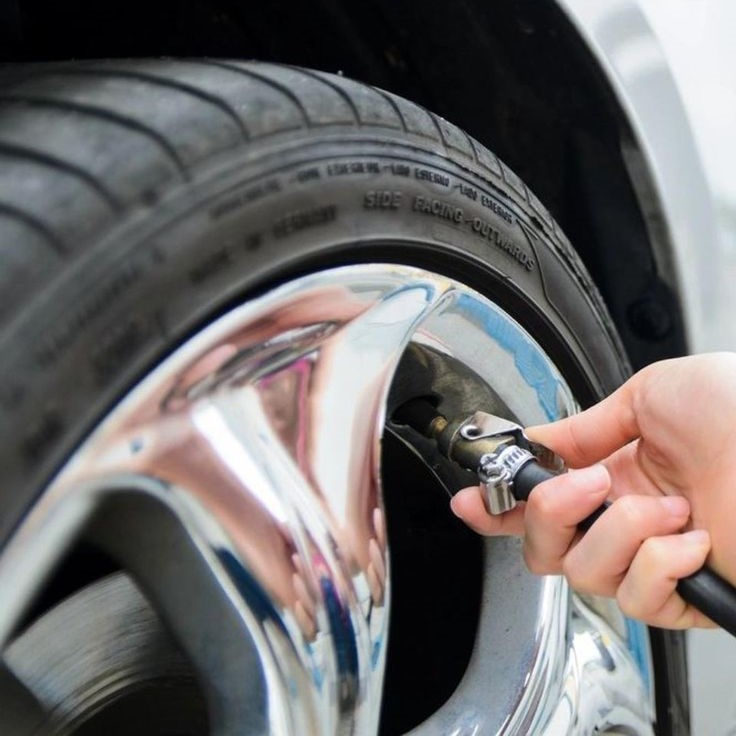Understanding
What tire pressure is too low? To grasp the concept of tire pressure, one must first understand its importance. Tire pressure refers to the amount of air inside the tire. It ensures the tire remains inflated and functions properly on the road. Maintaining optimal tire pressure is crucial for several reasons.

The Role in Vehicle Safety
Proper tire pressure is vital for vehicle safety. It plays a critical role in how your car performs on the road. When the pressure is correct, tires have optimal contact with the road surface. This ensures they provide the best possible grip, which is essential for safe driving, especially during adverse weather conditions like rain or snow. Good traction helps you maintain control over your vehicle, making it easier to steer, accelerate, and brake as needed.
On the other hand, too low tyre pressure can significantly compromise vehicle safety. Underinflated tires tend to flex more than they should, leading to uneven wear and reduced structural integrity. This not only affects fuel efficiency but also results in poor vehicle handling. Drivers may notice that their car feels sluggish or unstable when turning or maneuvering. Additionally, low tyre pressure increases stopping distances, meaning it takes longer for your vehicle to come to a halt even when applying the brakes firmly. This delay can be dangerous in emergency situations where quick stops are necessary.
Keeping an eye on “what tire pressure is too low” is therefore crucial to avoid these dangers. Regularly checking your tyre pressure and ensuring it aligns with the manufacturer’s recommendations can help prevent many of these issues. By staying informed and proactive about tire maintenance, drivers can enhance both their safety and the longevity of their vehicles.
How Tire Pressure Affects Performance and Efficiency
Beyond safety, tire pressure influences vehicle performance and fuel efficiency. Correct tyre pressure ensures tires wear evenly, extending their life. It also helps maintain fuel efficiency. When tire pressure is too low, it creates more resistance as the car moves. This means the engine works harder and uses more fuel. So, monitoring and maintaining tire pressure can save money on fuel and tires in the long run.
Signs
Identifying low tyre pressure early can prevent many of the dangers we’ve discussed. Let’s explore some key indicators.
Visual Indicators and How to Spot Them
You can often tell when tyre pressure is too low just by looking. Here are some signs to look for:
- Squatting: The bottom of the tyre appears flatter against the ground.
- Bulging: The sides of the tire seem to bulge outward.
- Uneven wear: One part of the tyre tread wears down faster than others.
If you spot any of these visual cues, use a tyre gauge to verify the pressure. Remember, what tire pressure is too low varies by vehicle, so check your manual.

The Impact of Temperature Changes
Temperature swings can affect tyre pressure. Here’s how:
- Cold weather: Causes tire pressure to drop.
- Hot weather: Might increase pressure, but not always reliably.
For every 10 degrees change in temperature, tire pressure can alter by 1-2 PSI. Regular checks will help you maintain correct pressure and avoid driving on low tires.
The Risks
Driving with low tyre pressure is a serious risk.
Increased Risk of Tire Failure
Tires with too little air are weak. They can overheat and fall apart. This might cause accidents.
Effects on Handling and Braking
Low pressure affects control. It makes steering harder and stopping longer. This can lead to crashes.
Optimal Tire Pressure Guidelines
Maintaining optimal tire pressure is key for safe and efficient driving. It’s not just about avoiding what tire pressure is too low; it’s about finding the ideal level for your vehicle.
Finding Your Vehicle’s Recommended Pressure
Your car has a specific tire pressure that suits it best. You can find this information:
- In the owner’s manual: Look for the tire section.
- On a sticker: Usually inside the driver’s door.
- From a dealer: Ask if you can’t find it yourself.
Always follow these recommendations. They are set by experts who know your vehicle.
Seasonal Adjustments
Changes in temperature mean changes in tire. Do this to keep it right:
Check Pressure Regularly:
Make it a routine to check your tire pressure regularly, particularly when seasons transition.
Seasonal changes can affect tire pressure due to temperature fluctuations; colder weather can decrease pressure, while warmer weather can increase it.
By staying consistent with your checks, you can ensure optimal tire performance year-round.

Adjust When Needed:
Be proactive in adjusting your pressure based on weather conditions.
In colder weather, it’s common for tire to drop, so be prepared to add air when temperatures fall.
Conversely, during hot weather, tire may rise; in this case, release some air to maintain the recommended PSI.
Keeping a close eye on pressure fluctuations helps prevent issues related to over- or under-inflated tires.
Be Consistent:
For the most accurate tyre pressure readings, aim to check your tires in the morning before driving.
Morning readings ensure that the tires are cold, providing a true reflection of the tire pressure without the heat generated from driving.
Establishing a consistent routine—whether it’s once a month or before long trips—will help you keep track of your tire health effectively.
These actions will help maintain proper tyre pressure year-round. Remember, the right pressure means safe and economic driving. Follow these guidelines and keep your tires in top shape.
How to Check Your Tire Pressure
Maintaining and knowing ‘what tire pressure is too low’ demands regular checks. Here’s how to do it properly.
Tools You Need to Measure Tire Pressure
To start, gather the right tools. You will need:
- Tire pressure gauge: Essential for accurate readings.
- Air compressor: For adding air if needed.
- Vehicle’s manual: To confirm correct pressures.
These tools are vital for checking tire pressure correctly.
Step-by-Step Guide to Checking Pressure
Find the Valve Stem Cap:
Locate the valve stem on each tyre, which is a small cylindrical protrusion on the tire’s rim.
The valve stem is typically covered by a cap that protects the valve from dirt and debris.
Remove the Cap:
Twist the valve stem cap counterclockwise to unscrew it from the stem.
Safely store the cap in a pocket or a secure place to prevent losing it while you perform the check.
Press Gauge Onto Stem:
Take your tire pressure gauge and firmly press it onto the valve stem.
Ensure a snug fit to avoid any escape of air, which could result in an inaccurate reading.
Read the Gauge:
Observe the reading on the gauge immediately after pressing it onto the valve stem.
Most gauges will display the pressure in PSI (pounds per square inch) clearly, so take note of this measurement.
Compare with Manual:
Refer to your vehicle’s owner manual or the sticker usually found on the driver’s door jamb for the recommended tire pressure.
Compare the reading from your gauge to the specified ideal pressure to determine if your tires are appropriately inflated.
Adjust as Needed:
If your tyre pressure is below the recommended level, add air using an air pump until it reaches the ideal pressure.
Conversely, if the pressure is too high, release some air until you reach the desired PSI level.
Replace the Cap:
After adjusting the tyre pressure, securely replace the valve stem cap back onto the valve.
Make sure it is tight to protect the valve from any elements and prevent air loss.
By following these simple steps, you can check your tire’s pressure effectively and ensure it is at an optimal level. Remember to perform this check at least once a month and before embarking on long trips. Maintaining proper tyre pressure not only enhances safety and vehicle efficiency but also helps to prevent potential issues related to low tire pressure.

Addressing Low Tire Pressure
Addressing low tire pressure promptly is critical to maintain safety and performance. Below you’ll find straightforward steps to tackle this issue.
What to Do When You Find Low Pressure
When your tire pressure is too low, here’s a quick and safe way to fix it:
- Find the nearest gas station or air pump: Most have air compressors available.
- Check your pressure again: Use your tire gauge for accurate measurements.
- Inflate the tires to the proper pressure: Refer to your vehicle’s manual for the right PSI.
- Recheck the pressure: Make sure it matches the recommended levels.
- Monitor afterward: Keep an eye on the tire to ensure it retains the proper pressure.
Taking action when you notice ‘what tire pressure is too low’ will help prevent more serious issues down the road.
When to Seek Professional Help
Sometimes, adding air isn’t enough. Look out for these signs to know when it’s time for expert advice:
- Persistent low pressure: If tires frequently lose air, it’s time to visit a mechanic.
- Tire damage: Look for punctures, cuts or bulges that could be causing a leak.
- Driving feels off: If the vehicle still handles poorly after inflating tires, get it checked.
In case of doubts or if these problems persist, seeking professional help is the safest choice. They have the expertise to identify and fix tire-related issues, ensuring your vehicle remains reliable and secure.
Preventing Low Tire Pressure
To avoid the dangers of driving with ‘what tire pressure is too low’, regular maintenance is essential. Here are some straightforward tips that can help prevent low tire pressure, keeping you safe on the road:
Regular Maintenance Tips
Check Tire Pressure Monthly:
Make it a routine to check your tyre pressure at least once a month to ensure optimal performance.
Refer to your vehicle’s manual for the recommended PSI (pounds per square inch) for both front and rear tires.
Maintaining the correct tire pressure enhances fuel efficiency, improves handling, and extends the life of your tires.
Inspect Tires Often:
Conduct regular visual inspections of your tires to spot any signs of wear or damage, such as cracks, bulges, or uneven tread wear.
Look for any objects embedded in the tire, like nails or stones, that could lead to air loss.
Addressing issues early can prevent more serious problems down the road and keep you safer while driving.
Rotate Tires:
Tire rotation involves moving tires from one position to another on the vehicle to promote even tread wear.
It’s recommended to rotate your tires every 5,000 to 8,000 miles or as specified by your vehicle’s manual.
Regular rotation helps extend the life of your tires and ensures consistent handling and traction.
Keep a Tire Gauge Handy:
Invest in a reliable tire pressure gauge and keep it in your vehicle so you can easily check tyre pressure whenever needed.
Having your own gauge allows you to monitor tyre pressure outside regular monthly checks, especially before long trips or after changes in temperature.
Digital gauges can provide quick and accurate readings, making it even easier to maintain proper pressure.
Be Aware of Load:
Understand that heavier loads can adversely affect tyre pressure and performance, so it’s essential to factor in additional weight when loading your vehicle.
When carrying heavier items, check tyre pressure and adjust it accordingly to accommodate the increased load.
Properly managing load and tyre pressure can improve safety, stability, and tire longevity.
Implementing these regular maintenance tips will help you keep your tires in good condition, ensuring a smoother and safer driving experience. By staying proactive and attentive to your tire care, you can enhance vehicle performance and extend the life of your tires.

Monitoring Systems and Technology to Assist
Advancements in technology offer tools to monitor tire pressure easily.
- TPMS: Most new cars have a Tire Pressure Monitoring System that alerts you when pressure is low.
- Smartphone Apps: Some apps connect with sensors in your tires, providing real-time pressure information.
- Portable Air Compressors: These allow for quick adjustments anytime, anywhere.
Using these systems and technology can provide peace of mind and help maintain the right tyre pressure for your vehicle.
Conclusion
In conclusion, knowing what tire pressure is too low empowers you to take control of your vehicle’s safety and performance. Regular checks, combined with awareness of warning signs, form the foundation of responsible tire care. Remember, underinflated tires pose significant risks, including reduced fuel efficiency, compromised handling, and increased accident probability. By following the tips outlined in this guide, you contribute to a safer, more cost-effective driving experience. Stay vigilant, and never underestimate the power of proper tire pressure.